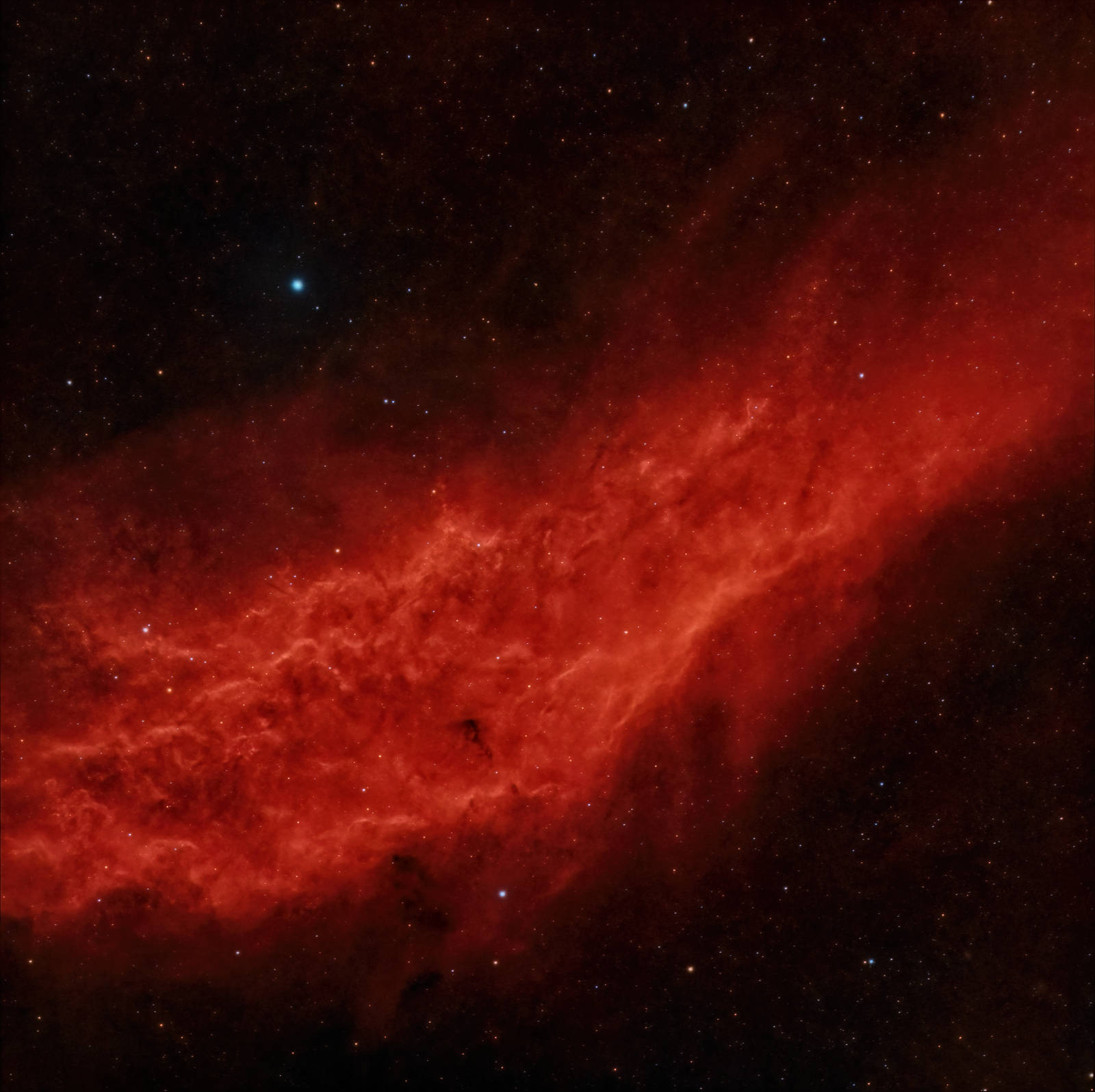Each week the Explore Alliance blog will feature astronomy news, tips and techniques for observers, and product news. For new observers, any bold face terms are defined at the end of the blog.
What’s Up? For the week of May 27th – June 3rd: Civil Twilight (telescope setup time) is 8:30 pm, Astronomical Twilight (full dark) is 9:30 pm.
Moon: The Moon reaches last quarter on Thur, May 30th, this means that evening skywatchers have no Moon to contend with for deep sky observations! Early morning sky watchers can enjoy the Moon rising before sunrise. Moonrise will be 11:56 pm Sunday, May 26th, and rise later (and thinner!) each morning. Moonrise Sunday, June 2nd will not be until 4:44 am.

Planets: No planets in the evening sky this week, but they are visible in the early am and during the day! Mercury, Mars, Neptune, and Saturn will be visible near the rising Moon early this week! See this week’s observer’s challenge!
The Evening Observer:
The Beehive Cluster (M44) leads a parade of Messier and other objects in a line down toward the southwest horizon.
- Cancer: Beehive cluster (M44) and Golden Eye cluster (M67)
- Monoceros: M48 lies on the eastern end of Monoceros along with NGC 2506 and 2539 lie just 5 degrees south. M46 and 47 huddle together with half a dozen other clusters lie further south.

Have you tried observing the night sky with Super Eyes? Explore Scientific is now featuring 2.1 x 42 binoculars from Vixen! These Galilean design binoculars offer an apparent field of over 25 degrees and allow you to see 1 to 2 magnitudes fainter stars than with your eyes alone. The wide field makes it feel like you are not using binoculars at all! These amazing binos are available HERE!

Leo offers a fine selection of double stars. While refractors are typically best for splitting doubles, don’t let that stop you from taking this challenge on with a reflecting telescope!
- Regulus (alpha Leonis) is easy to split, showing blue-white and yellow
- Denebola (beta Leonis) is also easy to split, a blue-white primary and yellowish companion
- Algieba (gamma Leonis) on Leo’s shoulder a fine white/yellow pair that require high magnification to split! A real challenge!
- Adhafera (zeta Leonis) on Leo’s neck is easy to split and may be visible in some binoculars
Leo also offers some lovely galaxies if you have a larger aperture instrument of 5-inches (125mm) or greater. Dark skies are needed, but the views will reward you!
- The Leo Triplet includes M65 and M66 (easily found in a 4-inch (100mm) instrument. The third member NGC 3628, is harder to spot. All three have about the same surface brightness (~Mag 12.5), but the diffuse nature of NGC 3628 makes it a more challenging target.
- M105, M96, and M95 fall on a line running roughly parallel to the base of Leo just south of kappa Leonis. There are several smaller galaxies here concentrated just south of the base of Leo.
Observer’s Challenge:

Note the Ecliptic – shown here in blue.
Daytime Planets! [May, 2024]
By this time of the month, Jupiter, Uranus, and Venus are much to close to the Sun to observe safely, but Mercury and Neptune may still be visible. Mars and Saturn should be excellent in clear, pre-dawn skies! Are you a planetary photographer? Many folks think of high resolution close ups, but a pre-dawn shot of the sky can be amazing, too!
As always, daytime observing requires Solar Awareness! Be very aware of where your telescope is pointing relative to the Sun. Never look in the eyepiece as your telescope slews! Cover or remove your spotting scope!
Start your observing run before dawn. 5:15 am should show you the Moon (3rd qtr phase) in the southeastern sky. Scan eastward toward the horizon to see Saturn (Mag 1.3) and Mars (Mag 1.0)
Do you have a GoTo mount such as the iExos-100 from Explore Scientific? If you don’t have a GoTo mount, check out the iExos-100 from Explore. It’s been called “the finest lightweight tracking mount on the market” by experienced observers – upgrade your mount today, it makes tasks like locating planets in the pre-dawn sky a snap!
Saturn will be reaching its Edge On state next March (2025), so the rings are limited to a thin line now. Some people complain that the rings are not visible, but this opens up special posibilities for observers! Without the glare of the rings, it becomes much easier to spot the smaller moons and to distinguish cloud bands and other features on the surface of Saturn. How many moons can you identify? Astronomy software such as Stellarium can help you track and identify these moons!
Neptune can be located between Mars and Saturn. Shining at just Mag 7.8, this planet will require significant magnification to reveal its disk and faint blue tint.
Mars does not reach opposition until next January, so it is near its conjunction when the planet lines up with the Sun in our sky. This means that Mars is on the opposite side of the Sun from us right now – and at its most distant point from Earth. This makes Mars apparent diameter just 5 seconds of arc, it will mean you need serious magnification just to see the disk and few, if any, surface features will be visible.
Mercury is in its gibbous phase; (74% illuminated) you should be able to spot the lop-sided disk shape, although surface features are extremely difficult with the planet this close to the Sun.
Send your daytime planetary photos to me at: doc@explorescientific.com
Do YOU have a favorite observing target in the spring or summer skies? Let us know!
Contact me at: doc@explorescientific.com
• • •

Dr. Daniel Barth has taught observational astronomy to thousands of students for more than 40 years and now works and creates content for Explore Scientific.
Dr. Barth is the author of Astronomy For Educators, the world’s most popular astronomy activity manual, now in use in more than 10,000 schools worldwide.
Available free: https://scholarworks.uark.edu/oer/2

Relatively new to astronomy? Dr. Barth’s latest book is Star Mentor, a collection of his best ‘At the eyepiece’ activities selected from more than 40 years of Astronomy teaching activities. Star Mentor is available from Explore Scientific HERE:
Would you like a signed or personalized copy of Star Mentor? Just email or call and we’ll get that right out to you!
Terms to Know:
Ecliptic: The plane of our solar system – usually shown as a line across star maps. The orbits of the Moon and all the planets lie along the ecliptic in the sky.
Edge on Rings: Saturn’s rings change from maximum tilt to edge on every seven years.
Gibbous: Any phase of a moon or planet that is more than half-full.
GoTo Mount: A computerized telescope mount that can automatically point the telescope to hundreds of targets automatically.
Leo Triplet: A collection of three bright galaxies in the constellation Leo.
Magnitude: The brightness scale for stars and planets. Lower numbers are brighter. Mag 7 is the dimmest object you can see in a clear, dark sky.
Messier Object: A collection star clusters and nebulae (110 objects) noted by 18th century astronomer Charles Messier that were not comets. Messier’s list contains some of the most famous and beautiful objects in the sky.
Planetary Conjunction: The time when a planet is closest to the Sun in our sky. At conjunction time, a planet rises and sets with the Sun. The planet is at its maximum distance from Earth – this is also when the planet appears smallest, and dimmest in a telescope.
Planetary Opposition: The time when a planet is opposite from the Sun in our sky. At opposition time, a planet rises at sunset and is in the sky all night long. The planet is at its minimum distance from Earth – this is the best time to observe planetary features!
Star Cluster: Star clusters come in two varieties – globular and open. Globular clusters are tightly bound collections of thousands of stars. Open clusters are a loose grouping of up to 100 or so stars.
• • •
Photo Credits: Moon photo and planetary alignment illustration © 2024, Daniel Barth; Beehive cluster image By Fried Lauterbach - Own work, CC BY-SA 4.0. Dr. Barth’s photo © 2023 by D.T. Barth.















Dejar un comentario
Todos los comentarios se revisan antes de su publicación.
Este sitio está protegido por hCaptcha y se aplican la Política de privacidad de hCaptcha y los Términos del servicio.